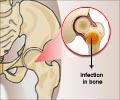A large study of people hospitalized with pulmonary nontuberculous mycobacteria (NTM) says that this condition is on the rise in the US.
A large study of people hospitalized with pulmonary nontuberculous mycobacteria (NTM) says that this condition is on the rise in the US. Nontuberculous mycobacteria (NTM) are environmental organisms found in both water and soil that can cause severe pulmonary (lung) disease in humans.
A research team led by epidemiologists from the National Institute of Allergy and Infectious Diseases, part of the National Institutes of Health, analyzed hospital discharge records of patients in 11 states whose combined total population represents 42 percent of the country. They reviewed database records spanning 1998 to 2005, and identified more than 16,475 hospitalizations associated with pulmonary NTM in people without AIDS. Before the widespread availability of combination antiretroviral therapy, pulmonary NTM disease was a common opportunistic infection among people with AIDS infection; in this study, the researchers limited their analysis to non-AIDS NTM disease.Of the 11 states studied, Florida, New York and California had 62 percent of the pulmonary NTM hospitalizations. The scientists chose these states to compare trends by geographic area. They found the annual prevalence of disease increased significantly among men and women in Florida (3.2 percent per year for men and 6.5 percent per year for women) and among women in New York (4.6 percent per year). There were no significant changes in California. Whether these geographic differences in prevalence are a result of exposure to NTM, or increased concentrations of mycobacterium in certain environments, or both, is not clear. However, previous studies have found high disease prevalence in the southeastern United States, particularly along the coastal regions of the Atlantic and Gulf coasts.
Study results show pulmonary NTM has increased in certain geographic areas of the United States, and while overall prevalence is higher in women, prevalence increases for both sexes in the fifth or sixth decade of life. Further research is needed to define the prevalence of the disease in nonhospitalized people in regions throughout the United States and to determine risk factors for disease susceptibility, including genetic and environmental factors.
Source-Eurekalert
RAS














